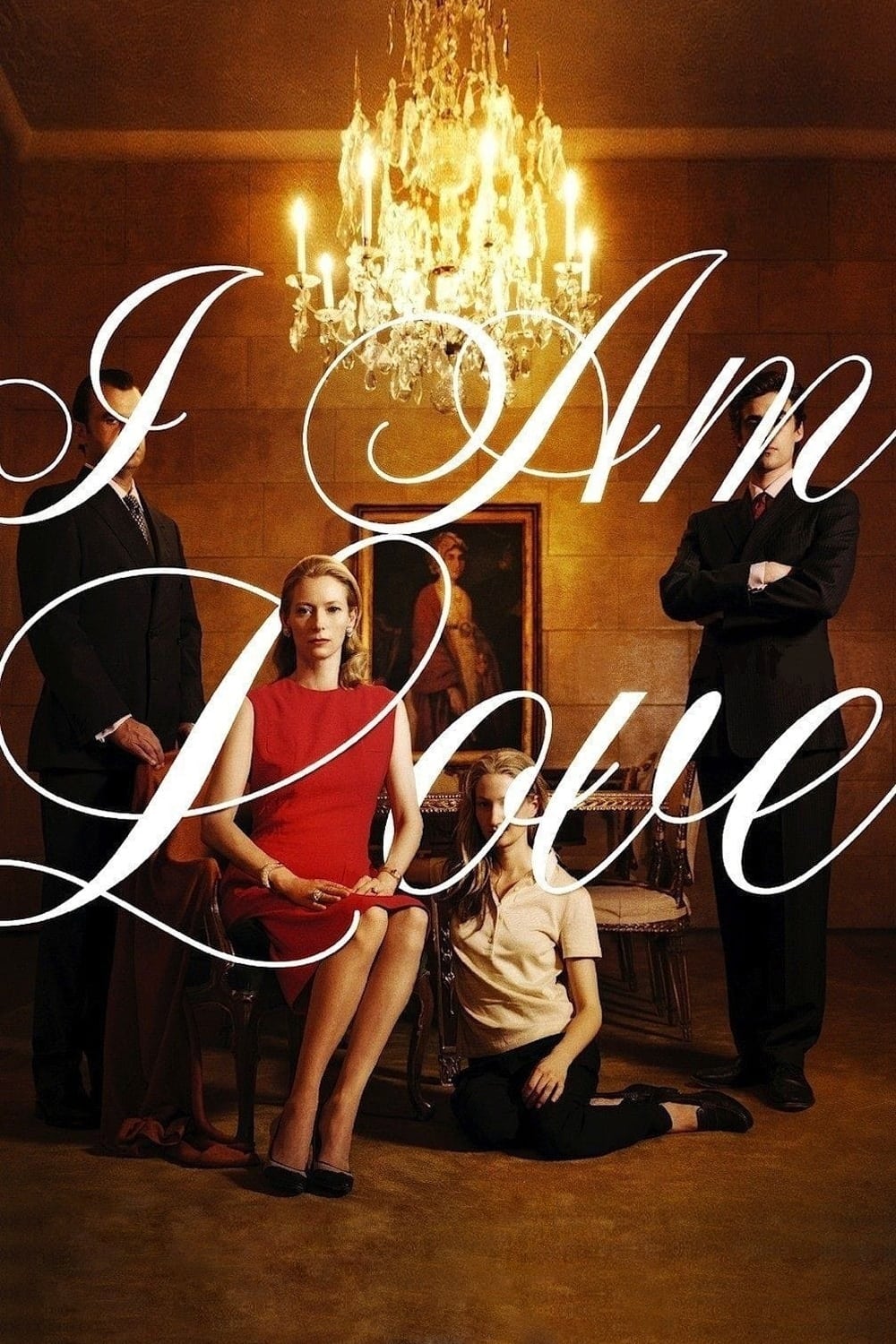
Emma has left Russia to live with her husband in Italy. Now a member of a powerful industrial family, she is the respected mother of three, but feels unfulfilled. One day, Antonio, a talented chef and her son's friend, makes her senses kindle.
27 Nov I Am Love (2009)
Outsides That Penetrate
This is an amazing construction, turned to profound and lasting effect. Rarely do sophisticated technique and human insight coincide, and I think we have producer/actress Tilda Swinton to thank. Quite apart from everything else, the woman learned Italian for this, with a Russian accent! It could be the highest mastery of the most difficult and effective role I have seen in decades. If you have not seen this, and you are old enough to know several sides of love, this will blow you away.
I guarantee that some images will stick with you. As is my custom, I’ll focus here on the narrative devices associated with “folding.”
These are devices that create layers that include the viewer, and then conflate them with the main narrative, engaging the viewer. Often it is a simple performance within the movie. In a date movie, you can see it where the guy professes his love in front of a crowd, often people in a theater.
This is visible here in a clear way and way more sophisticated. The film is in two halves. One sets up the situation and establishes the places, the physical places, as the container of the situations. The second half is a love story with passion and disaster. In between them is a moment when Tilda’s character discovers her artsy daughter is lesbian and in love.
Now you should know that by this time a very specific set of cinematic conventions has been established. The place matters. Every shot begins and many end by meditating on the planes and openings of buildings. Every one we see, we see because we have entered a place. Every act we see, we see almost because we are the places. In a usual film, either we miraculously have our eye placed where it needs to be, or the action is overtly arranged to occur in our frame. Here we see all, but only because we become the surrounding space. Many, many, shots are from architectural perspectives as if we were cornices or lintels, towers or chairs.
The thing starts quite literally with introduction to place, those first essential minutes spent not on telling who and when and what to expect in terms of happenings, but where at the cost of all else. Black and white architectural photography of the kind made famous by Architectural Digest in the fifties is used. (Later, we learn that our lesbian daughter is this photographer, and it is through her eyes that we are being told this story.)
We spend an hour to this discovery of the daughter’s same-sex love. The discovery comes in the form of a letter, photographs and a CD. As the letter is read, we see flashes that disturb the flow, images too passionate for us to grasp or linger upon. Flashes that shoot past us. This is shocking and sets the visual vocabulary that has been static upside down. Henceforth, we will witness passion that visually jars by deviation from the carefully established pace from the first hour. We return to it again and again with the central passion between the woman and her young lover, only to be reminded of how our eye collects and registers the urges.
An additional component deserves mention: taste. At the same time we are established in the place, that establishment is build around meals, ritualistic meals: passionless and boring. We literally see the boring food. It does not look Italian; it looks Bavarian. We learn that the family is in the fabric business, but all the fabrics we see them wear are second rate.
Later, when the love affair blooms, we taste it ourselves. First, when we see flashes of scenes, discontinuous and cinematically odd, they make the blood stir and loosen the groin, but first you salivate. Because you have seen the passion in things you can imagine tasting. This business of being IN and of the building, and having the food be a part of the building (there is a subplot about the new food and the essence of place, the literal essence), food that enters bodies — it is almost too much to describe. The young lover is the chef that has this talent of making environments come alive so that what is outside can go inside.
There is a love scene that is perhaps too wonderfully intimate to be seen.
When we are introduced to the buildings in the beginning, one building in particular is shrouded in the way that workers’ scaffolding has been erected. Then fabric is affixed, making a clothed building where something mysterious and transformative occurs out of sight. We do not know the full product line this family makes, but we know a primary product — important enough for the scion to exclusively focus on — is just this scaffolding fabric. And the key sale is not just for any building, but the Tate Gallery. It went a bit fast for me, but I think they were talking about the Tate Modern at the old Battersea Plant, this dating the story to 2000.
For those interested in a real life source, check out the Agnelli family and the son Edoardo.
The amazing score is architectural, bonded to the planes and the anticipation the places have of what is to come. This is “Belly of an Architect” done right, and with flesh. This is special. See it. At the end of the year, I may assign it my “four.”
Posted in 2010
Ted’s Evaluation — 3 of 3: Worth watching.


No Comments